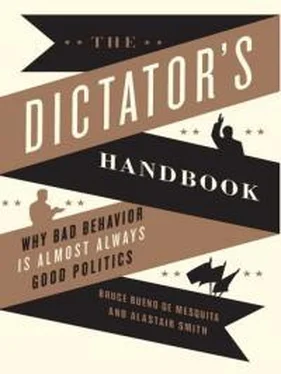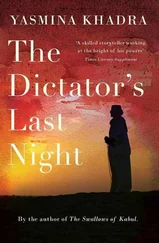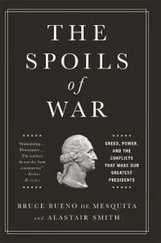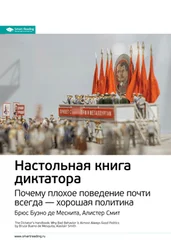Many revolutions end up simply replacing one autocracy with another. On some occasions the successor regime can actually be worse than its predecessor. This might well have been the case with Sergeant Doe’s deposition of Liberia’s True Whig government or Mao’s success against Chiang Kai Shek’s Kuomintang government in China. But the hope of the people when they participate is that they will improve their lot, either by enlarging the winning coalition through democratization or at least by becoming part of the new coalition.
Nipping Mass Movements in the Bud
There are two diametrically opposed ways in which a leader can respond to the threat of a revolution. He can increase democracy, making the people so much better off that they no longer want to revolt. He can also increase dictatorship, making the people even more miserable than they were before while also depriving them of a credible chance of success in rising up against their government.
The extent of expected loyalty from the military is one critical factor that shapes the direction an incumbent takes in responding to a nascent threat. Leaders know that as isolated individuals the people are no threat to their government. That is precisely why government leaders are reluctant to let people freely assemble and organize against them. If the people find a way to take to the streets en masse, the incumbent will certainly need very loyal supporters willing to undertake the decidedly dirty work of suppressing the masses if he is to survive.
We have met many leaders whose backers have deserted them at just such key times. When insurgents challenged Sergeant Doe in 1990, his soldiers terrorized and stole from the people of Liberia rather than combat the threat. In 1979, the shah of Iran was deposed when his soldiers joined the supporters of Ayatollah Khomeini. Similarly, President Ferdinand Marcos in the Philippines lost power in 1986 because his security forces defected. Russia’s Czar Nicholas was deposed when the people stormed his Winter Palace in St. Petersburg in 1917. The army, poorly paid and facing deployment to the front in World War I, declined to stop them. Many other crucial events in modern political history, from the French Revolution to the collapse of the Soviet Union and its satellite states, also owe their occurrence to the failure of core supporters to suppress the people at critical moments. The recent so-called colored revolutions (Georgia’s Rose Revolution in 2003, Ukraine’s Orange Revolution in 2004–2005, and the Tulip Revolution in Kyrgyzstan in 2005), the Jasmine revolution in Tunisia, as well as the uprisings in Egypt are also manifestations of the same phenomenon.
In each case, coalition support evaporated at the key moment because the leader could no longer promise his or her supporters an adequate flow of rewards to justify their undertaking the dirty work required to keep the regime in place. The Russian czar, France’s Louis XVI, and the Soviet Union were all short of money with which to reward supporters. The Philippines’ Marcos and Iran’s shah were both known to be terminally ill. New leaders typically reshuffle their coalition, so key backers of the regime were uncertain whether they would be retained by the successor. Lacking assurance that they would continue to be rewarded they stood aside and allowed the people to rebel.
Revolutionary movements may seem spontaneous but we really need to understand that they arise when enough citizens believe they have a realistic chance of success. That is why successful autocrats make rebellion truly unattractive. They step in quickly to punish harshly those who first take to the streets. This is what we saw in Iran following the June 2009 presidential election. The regime quickly stepped in, beating, arresting, and killing protesters, until the people feared continuing to take to the streets.
A prudent dictator nips rebellion in the bud. That is why we have reiterated the claim that only people willing to engage in really nasty behavior should contemplate becoming dictators. The softhearted will find themselves ousted in the blink of an eye.
Protest in Democracy and Autocracy
Dissatisfaction with what a government is doing is an entirely different matter in democracies than it is in autocracies. In a democracy, protest is relatively cheap and easy. People have the freedom and, indeed, the right to assemble. They also have easy means through which to coordinate and organize. We know from earlier chapters that governments ruled by a large coalition produce lots of public goods, including a special set of such goods that fall under the general heading of freedoms. These include a free press, free speech, and freedom of assembly. These freedom goods make it much easier for large numbers of people to exchange information about how they feel about their government and to express objections to any policies they don’t like.
These freedoms also make protest easy. But since people like these freedoms, granting them can also dissipate their desire to bring down the government. Protests are common in democracies but revolts intending to overthrow the institutions of government are not. Democrats provide the policies people want because otherwise the people will protest, and when people can freely assemble there is little a leader can do to stop them except give them what they want. Sometimes, of course, democratic leaders fail to give the people what they want. Then people are likely to take to the streets to indicate their dislike of a particular policy. That’s what generally happens when a democracy goes to war, for example. Some people favor the decision and others oppose it. Those who oppose it frequently make their displeasure known by taking to the streets, and, if there are enough of them and if they protest for a sufficiently sustained time, they can provoke a policy change. Lyndon Johnson, for instance, chose not to seek reelection in the face of deep dissatisfaction with his Vietnam War policies.
In democracy, protest is about alerting leaders to the fact that the people are unhappy, and that, if changes in policy are not made, they’ll throw the rascals out. Yet in autocracy, protest has a deeper purpose: to bring down the very institutions of government and change the way the people are governed.
Autocrats dislike freedoms because they make it easy for people to learn of their shared misery and to collaborate with each other to rise up against the government. Given their druthers, autocrats eliminate freedom of assembly, a free press, and free speech whenever they can, thereby insulating themselves from the threat of the people. Unfortunately for autocrats, without the public goods benefits from these freedoms, people can find it hard to work effectively because they cannot easily exchange ideas even about how to improve the workplace. And if the people don’t work effectively, then the leader cannot collect tax revenues.
Autocrats must find the right balance. Without enough freedom the people are less productive and do little work, but give them too many freedoms and they pose a threat to the leader. The degree to which autocrats rely on taxation to fund the government limits the extent to which they can oppress the people.
Nations awash with natural resource wealth or lavished with foreign aid rarely democratize. They are the world’s most oppressive places. Their leaders have resources to reward their essential supporters without having to empower the people. In such societies, though the people really desire change, they cannot act upon these wants. Without the ability to assemble, coordinating against the government is difficult. What is more, the people know the leader can afford to pay the coalition to oppress them. With little chance of success, the people keep their heads down. Protest is rare and answered with even greater repression.
Читать дальше












